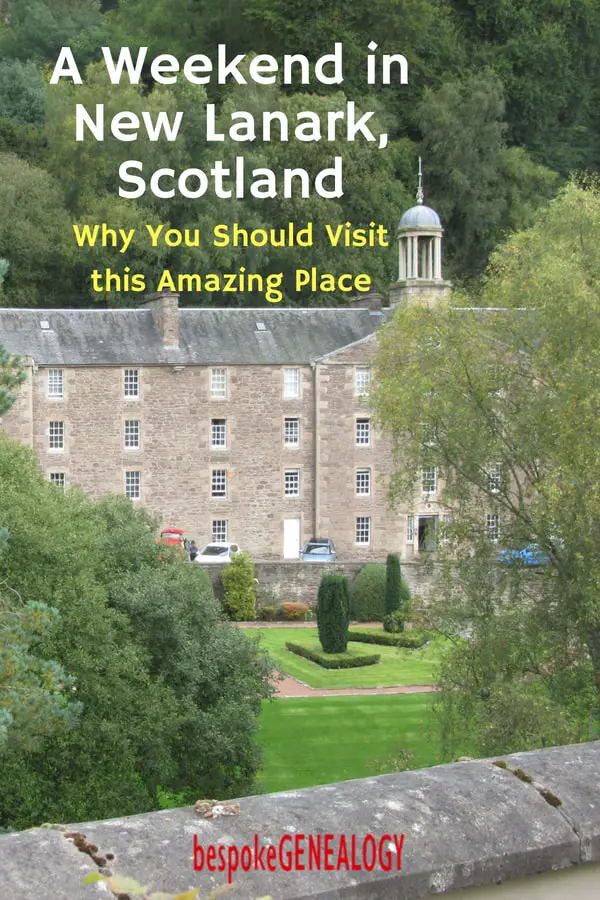
My wife and I recently spent a weekend at New Lanark Mills, near Glasgow. New Lanark is an 18th Century Village containing beautifully restored houses, mills and other buildings and is now a UNESCO World Heritage site. The Village is on the banks of the river Clyde, in a gorgeous setting, and within easy reach of Glasgow and Edinburgh.
The Village is associated with the social reformer Robert Owen who co-owned and managed the mills from 1800 to 1824. During this time, New Lanark Mills was a pioneer in groundbreaking social reforms including the world’s first infant school, the start of the co-operative movement and a workers health care fund.
Getting There
By car; New Lanark is situated just outside the south side of Lanark, a market town 25 miles south east of Glasgow and 35 miles south west of Edinburgh. It can be reached via the M74 motorway (junctions 7 or 12) and A70/A72.
By public transport; there are regular trains operated by Scotrail from Glasgow Central to Lanark. The local 135 bus runs from Lanark town to New Lanark village. Check the Traveline Scotland website for details and times.
Where to stay
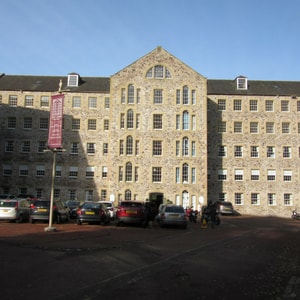
New Lanark Mills Hotel
We stayed at the New Lanark Mills Hotel in the village and we highly recommend it. The hotel has been converted from the original mill and is very comfortable.

View from our room in the Hotel
The hotel also manages some one and two bedroom self catering cottages in the village. Check the website for details.
What to see at New Lanark Mills
A Passport Ticket bought at the New Lanark Mills Visitor Centre gives you a place on a guided tour and includes these attractions:
- The Annie McLeod Experience Ride; this ride “takes you back in time to 1820” to explore what life was like for mill workers, told through the eyes of a child worker. I thought this experience would be a bit “Disneyesque” but I found it to be surprisingly interesting and informative.
- At the end of the ride, you find yourself in the Roof Garden which is on top of Mill No. 2. From here there are very pleasant views of the River Clyde and surrounding countyside. You can read more about this feature in the Roof Garden Blog.
- Millworkers houses; two of the original houses in the village have been reconstructed to show what the living conditions were like in 1820 and the 1930s.
-
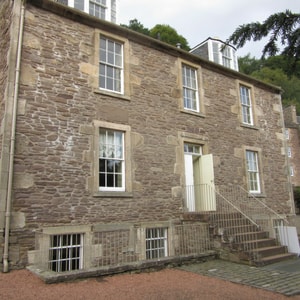
Robert Owen’s House
- Robert Owen’s house; this house was constructed for Owen when he took control of the mill in 1800. It contains his original desk and other period furniture.
-
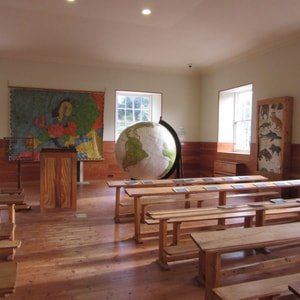
The Historic Classroom
- The world’s first infant school; the Historic Classroom shows what it was like to go to Robert Owen’s school in the early 1800s
- The Village Store; this is where a seed was planted that led to the co-operative movement
-
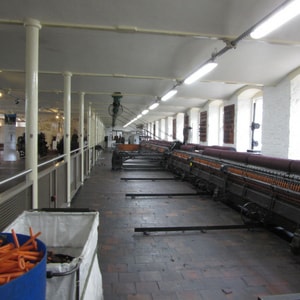
Working Machinery in the Mill
- A working mill; there is still working textile machinery in the mill that you can watch in production.
There is also a café and the Mill Shop where you can buy products made from New Lanark wool and textiles as well as other items.
If you are interested in the history of the time, then New Lanark Mills is well worth a visit if you are in Scotland. The 18th century village and mill complex is near complete and has been beautifully restored and is in a stunning location next to the Falls of Clyde.
A brief History of New Lanark Mills

The Falls of Clyde
The River Clyde is often thought of as ugly, being associated with shipbuilding and heavy industry in Glasgow. But further south the river becomes very picturesque, passing through lush valleys. Just south of the town of Lanark are the Falls of Clyde, which in the 18th century was a well known beauty spot. The falls attracted visitors from all over the country and was often used as a subject for paintings.
David Dale
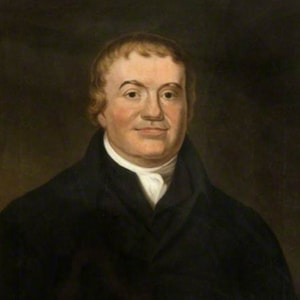
David Dale
In 1784, the visitors to the Falls of Clyde included the cotton-spinning pioneer Richard Arkwright and Scottish industrialist David Dale. These men were not so much interested in the beauty of the falls but saw them as a source of power for a new cotton mill. Arkwright predicted that the area would become the “Manchester of Scotland”, a huge textile production city. Thankfully the city didn’t happen but these men bought the land and built a mill and a village containing houses for the workers. This village was known as New Lanark.
The first mill started operating in 1785 and in 1786; Dale dissolved the partnership with Arkwright, gaining sole control. By 1793, Dale had four mills in the village and employed 1157 workers; nearly 800 of these were children, the youngest being only 6 years old. Children were seen as ideal workers as they were small enough to crawl under the machines to clear cotton waste.
Many of the workers came from the Scottish Highlands, evicted from their lands in the “Clearances”. Housing was given to families with at least three children who were expected to work in the mills.
Working conditions were relatively good for the period and the children were given two hours of education a day.
Robert Owen
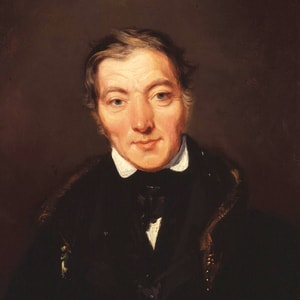
Robert Owen
In 1799, David Dale sold New Lanark Mills to his new son-in-law, Robert Owen and his partners. Owen, born in Newtown, Wales had been involved in the cotton spinning industry in Manchester, becoming manager of the Piccadilly Mill when only 21 years old. Owen took control of New Lanark on 1st January 1800.
Owen was interested in improving the lot of his workers and with a change in business partners a few years after taking control at New Lanark, he was able to able to make some big changes.
It was the practice in most mills that workers were paid in part with tokens which could only be used in company shops to buy provisions. This merchandise was often of poor quality and sold at inflated prices. Owen changed this at New Lanark so that workers were paid in cash and the shop sold good quality products that were bought at wholesale prices with a small margin added. The profits were then invested into the village institutions.
Owen’s shop became the basis of the co-operative movement in Britain. Incidentally, a statue of Robert Owen stands outside the Co-operative Bank in Manchester.
Robert Owen introduced the world’s first infant school in New Lanark and education for all children in the village until they were at least 10 years old. Children would now not work in the mills until they were 10. This was pretty radical for the day and, was at first, unpopular with parents as it cut off a source of income. However, it did allow mothers of very young children to work while the kids were attending infant school.
Owen introduced a “Sick Fund” with workers contributing a 60th of their wages as well as a workers savings bank. Radical stuff for the early 19th century!
Owen was interested in pursuing more radical ideas in worker self sufficiency and in 1824, he sold his share in New Lanark and with his sons and daughter moved to the United States. Here he founded the community of New Harmony, Indiana.
The New Harmony experiment was a bit of a disaster and Owen lost most of his investment. He returned to England and became involved in the early Trades Union movement. His children remained in the US and his eldest son, Robert Dale Owen became a Democrat Congressman who was probably best known for introducing the bill that founded the Smithsonian Institution.
New Lanark after Robert Owen
The mills at New Lanark continued in production until the 1960s. There were some unsuccessful attempts to find new industrial uses for the mill buildings, but nothing really worked. The problem is the location which was ideal for water power, but not so good for road access for large trucks.
Eventually, many of the buildings were compulsory purchased by the local authorities and funding found for the restoration and preservation of this important historical site. In 2001, New Lanark became a UNESCO World Heritage Site.
If you’d like some further reading about New Lanark and Robert Owen, check out these books:
Please pin a pin to your Pinterest board:




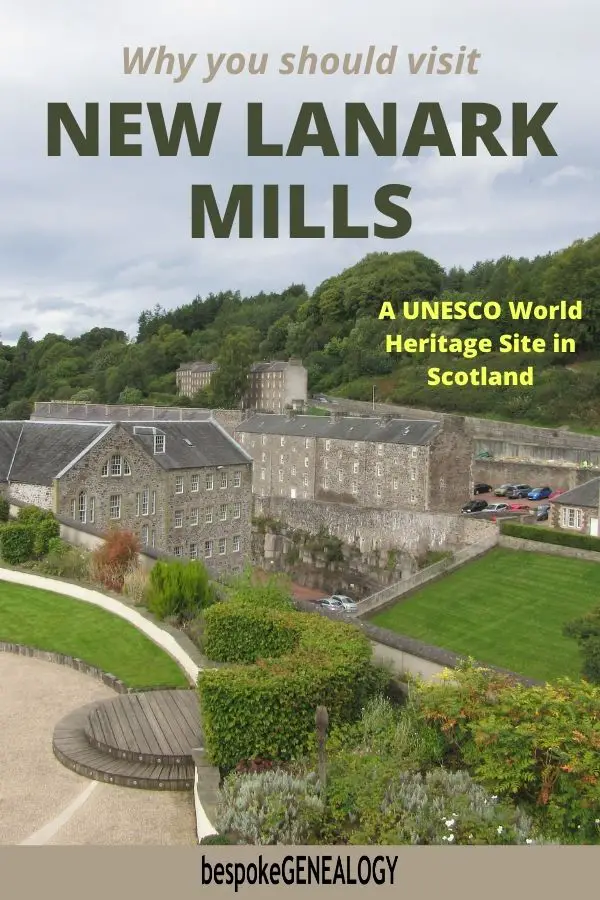

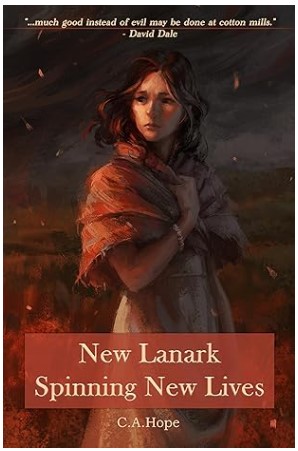

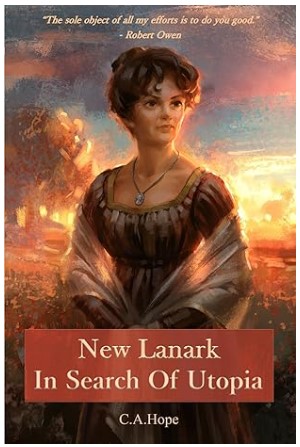
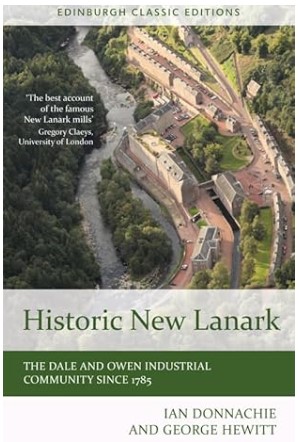
Leave A Comment